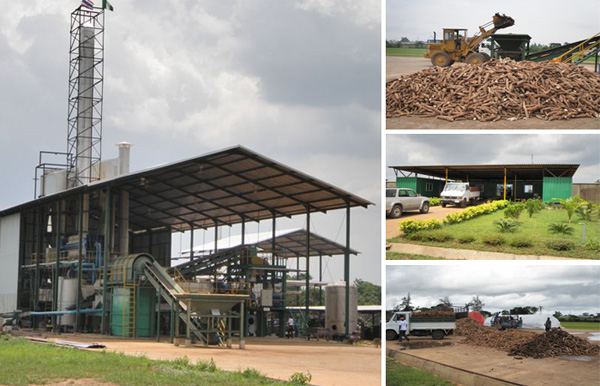Cassava flour production in Tanzania
Cassava is native to Brazil, and it was widely spread by the Portuguese in tropical and subtropical regions of Africa, Asia and the Caribbean from the 16th to the 17th century. According to the World Food and Agriculture Organization of the United Nations, there are 105 countries planting cassava in the world, with an annual root production of about 230 million tons, half of which are produced on the African continent. Cassava, which is rich in starch in the form of carbohydrate, has multiple uses. It is consumed in many processing forms, in the industry and also as livestock feed. Roots or leaves are made into flours. Flours are of three types, yellow garri, white garri, or intermediate colour, with yellow garri considered the best product. Its other products are as dry extraction of starch, glue or adhesives, modified starch in pharmaceutical as dextrines, as processing inputs, as industrial starch for drilling, and processed foods.

Cassava for cassava flour production
Tanzania is also a major producer of cassava in Africa, growing 700000 hectares and more than 7 million tons a year. With 15 million hectares of arable land available in Tanzania, only 1/3 of that amount is now cultivated, so the Tanzanian Ministry of Agriculture believes that growing biofuel crops in Tanzania is promising. It is necessary to know the reasons and the cassava flour production in Tanzania.
Tanzania is short of oil and its products are consumed entirely by imports, consuming about 1.2 million tons of foreign oil a year. To ease the foreign exchange deficit and the constraints of international oil prices on economic development, the Tanzanian government is determined to develop biofuel resources, plant large areas of cassava, sugar cane and other crops with a view to eventually obtaining biodiesel and ethanol.

DOING automatic cassava peeling machine
After introducing the planting conditions of cassava in Tanzania, now we are going to talk about the detailed introduction of cassava flour production in Tanzania. The cassava flour processing line needs 5 steps as followings.
Step 1. Usually use two machines dry sieve and paddle washer. We all know that cassava is bigger than other potatoes, dry sieve main function is remove the dirt, sand, or other impurities which mixed with cassava.Mixed cassava with water, fully remove the soil in cassava surface.
Step 2: Peel the cassava and wash it in clean water. We have two types cassava peeling machine, full stainless steel type with newest technology and carbon steel type with contact materials parts stainless steel. You can select as your needs. Of course, the full stainless steel type is better.

Plate frame filter press machine
Step 3. After peeling, grind the cassava with grater machine.The raspers mainly used in the process of cassava flour production in Tanzania.
Step 4. Using plate and frame filter press to dewater, after this, cassava flour water content less than 40%.
Step 5. After air drying, cassava flour water content will be 12%-14%, reach the requests.Flash dryer is the idea choice for flour production enterprise of how to make cassava flour production in Tanzania.

Doing Company installed cassava flour production plant
Cassava flour production in tanzania is well-developed as an organized agricultural crop. It has well-established multiplication and processing techniques for food products and cattle feed. There are more than 40 cassava varieties in use. Though the crop is produced in 24 of the country's 36 states, cassava production dominates the southern part of the country, both in terms of area covered and number of farmers growing the crop. Cassava is grown throughout the year, making it preferable to the seasonal crops of yam, beans or peas. It displays an exceptional ability to adapt to climate change, with a tolerance to low soil fertility, resistance to drought conditions, pests and diseases, and suitability to store its roots for long periods underground even after they mature. Believe after reading this essay, you will have a better understanding on the cassava flour production in Tanzania.






